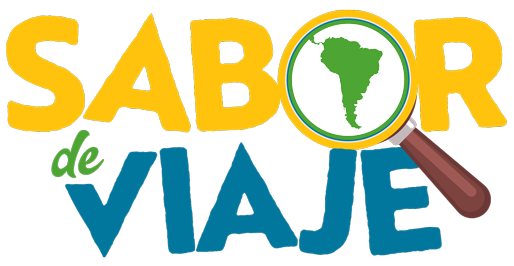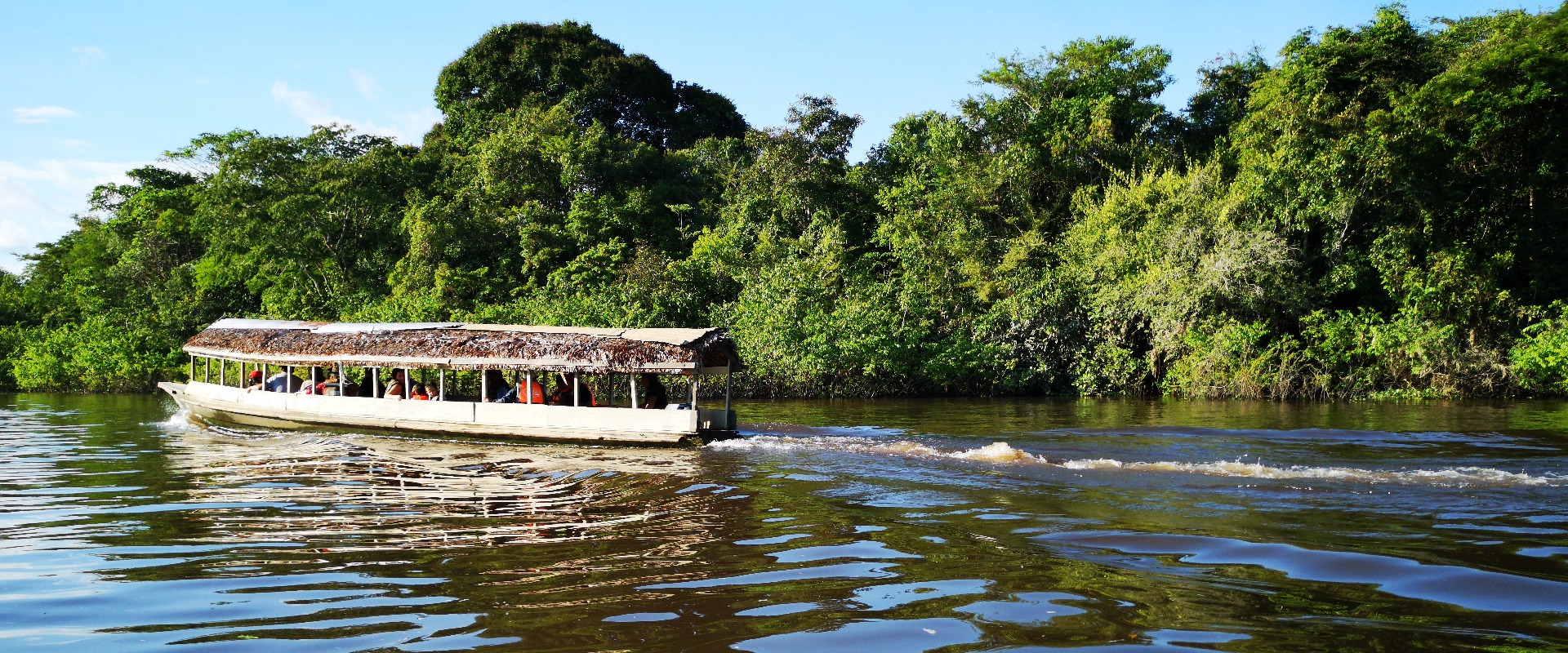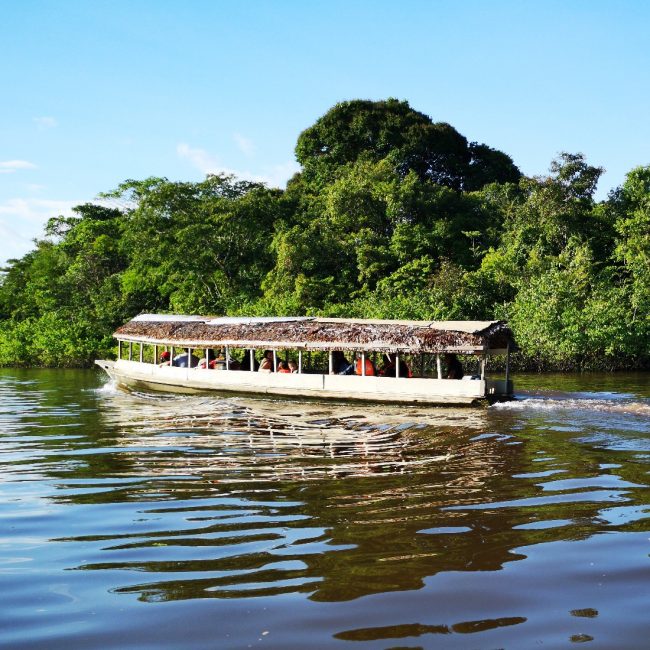Jungle
If you are thinking about visiting a jungle or rainforest, you can't do much better than visit the Amazon Jungle in Peru, but which is the best region to visit? Although there are stretches of rainforest in various locations on various continents right across our planet, it is Peru that contains parts of the Amazon Rainforest with the highest levels of biodiversity in the world, some of the greatest bird-watching holiday opportunities available, and some of the most unique jungle tours and experiences to be found anywhere. However Peru is a big country, and the Amazon Rainforest is even bigger, so if you are thinking of travelling to the jungle in Peru you may be thinking ``which is the best jungle region to visit in Peru?``. Each jungle region has its own subtle nuances, its own strengths and weaknesses, and it is important you choose the right jungle region to visit that will suit your own travel expectations and personal requirement. Read below to find out more about the positives and negatives of travel to each of the jungle regions in Peru, or discover our Amazon Holidays to start your adventure...
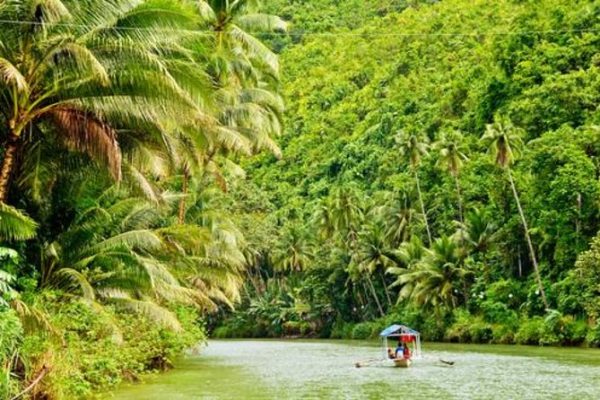
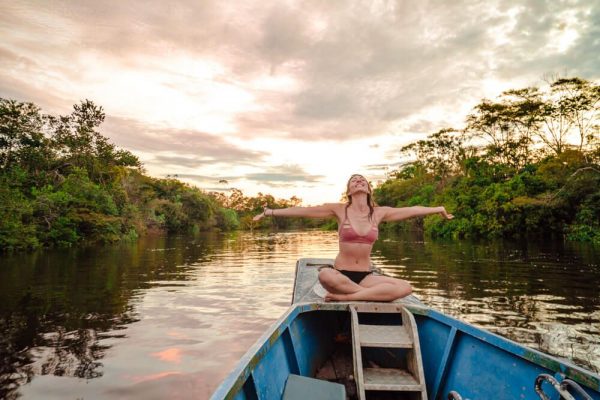
Visiting the Amazon in Peru
The truth is that the Peruvian Amazon is a fascinating, rare, and beautiful location on our planet, and whichever part of the Amazon you decide to visit as part of a holiday or tour you will undoubtedly have opportunities to spot incredible wildlife, listen to the fascinating sounds of the jungle by night, sleep in a jungle lodge, and have unique and wonderful experiences.
Peru is also a wonderful choice of country to visit the jungle, as access to the jungle is much more relatively easy, safe, and cost effective compared to other countries such as Brazil (which requires extensive travel to reach the true jungle heartland). The other advantage is that Peru provides a wonderful opportunity to visit the jungle as part of a wider holiday throughout the country, so visits to the jungle can be added to tours of Machu Picchu, or treks in the Andes, all within one short holiday.
In Peru there are three main regions where it is possible to go on tours to the Amazon Rainforest and experience the true vibrancy of the jungle: Manu, Tambopata, and the Iquitos Region. Although it would be wonderful to visit all three regions and of course this is possible, in reality most tourists would select one jungle region from these options.
Iquitos Amazon Jungle Region
Iquitos is a city in the north-eastern region of Peru and is the largest city in the world that cannot be accessed by road – travel to the city is only possible via flight or river boat.
Iquitos is a living breathing bustling fascinating example of a jungle city, and the city itself is a tourist destination due to the colourful mansions dotted around the city centre that are leftovers from the millionaires that lived here during the rubber-boom of the early 20th century.
However most visitors to Iquitos would be using the city as a transit point for cruises up the Amazon, or for lodge tours to visit the Amazon Jungle in the region surrounding the city. This region is home to some fantastic high-standard lodges.

One of the benefits of visiting the Amazon in the Iquitos region of Peru is this is the only region of Peru where it is possible to visit the true “Amazon River”, as opposed to a tributary of the Amazon, so if sailing down the vast Amazon River is something you want to tick off your bucket-list, then you must visit this region. The river also contains wildlife not found in some of the smaller tributaries, so spotting for rare pink river dolphins is possible in this region. In addition to the fantastic lodges in this region there are also some excellent excursions, including piranha fishing, and walking along an extended canopy in the tree-tops.
One of the other benefits of this region is that it is one of the only places where it is possible to visit villages and see traditional ways of life. Although indigenous villages and peoples exist throughout the entire Amazon, the true “uncontacted” tribes are protected and it is not possible for tourists to visit those locations. The Yagua tribe, pictured below, are one example of the types of villages that can be visited in this region, and they have opened their villages to share demonstrations of their traditional dancing and hunting techniques.

There are some disadvantages of travel to this jungle region when compared to other jungle regions in Peru. Travel costs to / from Iquitos (regular daily flights from Lima) are usually more expensive than travel costs to other jungle regions in Peru, particularly for people that also want to visit Cusco as both Manu and Tambopata are much closer to Cusco.
The large size of Iquitos also means that wildlife is less abundant in the regions close to the city, so if you are travelling to this region to watch bird-life or wildlife opportunities will be less than elsewhere in Peru unless you travel for extended periods of time deep within the Amazon away from the city.
Overall: a good option for you if you want to sail down the Amazon River, are interested in staying in high quality lodges, want to visit traditional villages, and for those that also want to visit the city of Iquitos. Bird-watchers and anyone travelling to the Amazon specifically to observe wildlife may find better options elsewhere.
Manu Amazon Jungle Region
Manu National Park is a UNESCO World Heritage Site, and contains incredible levels of biodiversity with over 15,000 species of plants, over 1000 species of birds, and over 400 species of mammals, reptiles and amphibians.
The Manu region is split into three main zones: the Manu National Park, the Manu Reserved Zone, and the Manu Cultural Zone.
Access to the National Park itself is strictly controlled and is generally restricted to the indigenous tribes that live in the region, park rangers that protect the park, and research scientists. Tourism is restricted to both the Reserved Zone and the Cultural Zone which both flank the park and are park of the wider Manu Biosphere Reserve but are not part of the national park itself.
One of the benefits of the Cultural Zone is that it can be accessed via road on a full day journey from Cusco, which can be a breath-taking and stunning journey to make, travelling up and over the Andes at a mountain pass then back down to descend into the cloud forests of the Amazon. Due to its ease of access via road, and lack of requirement for flights, the Cultural Zone is a very good value option for tours to Manu, and 3-day tours (or longer) are possible from Cusco. Another advantage to the Cultural Zone is that it provides a very good chance you will be able to observe the Peruvian Cock of the Rock bird of paradise (photo below).
The main disadvantage of travel to the Manu Cultural Zone compared to both Tambopata and Iquitos region is that due to its proximity with Cusco it is perceived to be more of a value option, and the standards of some of the lodges are not quite as good as those found in other jungle locations in Peru.
The Manu Reserved Zone by contrast is much much deeper into the jungle, far away from Cusco, and can be reached either via an extended journey by road from Cusco then by riverboat deep into the jungle, or by flight to the city of Puerto Maldonado then by riverboat from there. The wildlife here is very abundant, and therefore this region is very popular with wildlife enthusiasts and bird-watchers who want a specific type of holiday, such as a bird-watching holiday or wildlife photography holiday. The lodges here are of a higher standard than those found in the Cultural Zone, however due to the length of travel, specialist nature of the guides, higher standards of lodges, and isolated location of the lodges making food and resource travel costs more expensive, this can be a much more expensive option.
Overall: If you are desperate to see the Peruvian Cock of the Rock or are looking for the best value option tour to the Peruvian Amazon, then the Manu Cultural Zone is a good choice. If your budget allows, and you are looking for a more specialist type of holiday, such as a bird-watching holiday, then the Reserved Zone is an excellent choice. However if you wish to visit the true “Amazon River” rather than a tributary, want to avoid the lengthy road travel from Cusco to Manu, or prefer a higher standard of lodge but without the expense of the Reserved Zone, then you may find better options elsewhere.
Tambopata Amazon Jungle Region
Tambopata is a province within the Madre de Dios region in south-eastern Peru, close to the border with Bolivia. Tambopata jungle region is usually accessed via short flights from Lima or Cusco to the city of Puerto Maldonado, the capital of the Madre de Dios region.
There are many advantages of Tambopata as an option for a visit to the Amazon Jungle in Peru, and as a consequence this is actually a very popular choice for jungle tours.
Tambopata is close to Manu, and therefore has almost the same levels of biodiversity and flora and fauna as Manu itself, so is a good option for those looking to observe wildlife. Puerto Maldonado is also a much smaller city than Iquitos, in northern Peru, and therefore has less of an impact on the wildlife in the region meaning that lengthy riverboat journeys deep within the Amazon away from the city are not always necessary to allow you to observe some fabulous wildlife. Another advantage is that there are some great options for daily excursions in this region, with macaw and parrot clay-licks being a highlight, but with canopy towers, ox-bow lakes and other natural landmarks also attracting wildlife.
Tambopata also contains some excellent lodges offering a good blend of comfort and services, with location and ease of access to wildlife, with good guides employed from the local region with good wildlife knowledge.
Disadvantages of travel to the Tambopata jungle region are few and far between as in general the region does have fabulous wildlife opportunities, and good standards of lodges. However it can be a more expensive option compared to Manu Cultural Zone due to the requirement of domestic flights to / from Puerto Maldonado, and the Manu Reserved Zone is probably a better option if you are looking for a specialised type of holiday.
Overall: Tambopata gets our pick as the best “all-round” jungle option in Peru, in general offering the best overall value in terms of ease of access, standards of accommodation, and opportunities to observe wildlife and experience the Peruvian Amazon Jungle. Tambopata can be a more cost-effective region to visit compared to Iquitos due to cheaper travel costs to the region, and compared to Manu Reserved Zone as the lodges can be easier to access. However if you are looking for a budget option, or want to visit the Amazon River (instead of a tributary), then you may find better options elsewhere.
Our best tours to the amazone
Leave a Reply
Do you have some comments or questions for us? We’d love to hear from you! Don’t be shy! Feel free to drop us a message!
